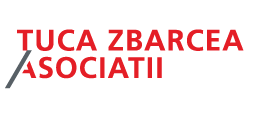Across Europe, defense sectors are experiencing significant transformations and budgetary escalations, driven by a need for enhanced military readiness and modernization. Avellum Partner Andriy Romanchuk, Cobalt Partner Deividas Soloveicik, Nagy es Trocsanyi Partner Gyorgy Kiszely, and Tuca Zbarcea & Asociatii Partner Serban Paslaru take a closer look at defense spending in their respective countries.
Budgetary Escalation
“Ukraine’s defense sector has undergone a rigorous transformation, adapting to the exigencies of martial law and the pressing need for enhanced military readiness,” Romanchuk begins. “The Cabinet of Ministers adopted a special decree for defense procurement slightly relaxing the regulatory procedure during martial law.” This move was complemented by “separate regulations for the procurement of unmanned aerial vehicles and electronic warfare systems.”
Additionally, the transformation of Ukroboronprom into JSC Ukrainian Defense Industry is aimed at “transparent management, and offers the potential for consolidating other enterprises under JSC Ukrainian Defense Industry and promotes conditions for establishing joint ventures with foreign partners,” Romanchuk explains. The defense budget’s growth to UAH 1.164 trillion, “which exceeds the number in 2021 by almost ten times,” underscores the significant escalation in Ukraine’s defense spending and commitment to securing its sovereignty.
Nearby, in Lithuania, legislative foresight has played a pivotal role in integrating national security considerations into defense procurement. “Lithuanian legislators took action and pioneered in regulating the issues of public procurement related to the protection of national security,” Soloveicik says. This legislative agility was further demonstrated when the “Lithuanian parliament swiftly amended the law at the beginning of the year 2022,” to enable the rejection of bids that pose a threat to national security.
Romania’s defense sector, on the other hand, is characterized by its focus on modernization and cooperation with local industry. “Significant endowment programs for land forces, air forces, and navy are to be continued or initiated in 2024,” Paslaru comments on ongoing and future initiatives. He also mentions the strategic importance of a new offset law, “to encourage industrial and technological cooperation with local industry and develop local defense capabilities,” highlighting the dual focus on enhancing Romania’s military readiness and bolstering its defense industry.
Hungary has seen a marked increase in spending and an emphasis on modernization as well, according to Kiszely, who points to a significant shift in budgetary priorities. “Since the all-time low defense spending ratio of 2014, Hungary’s military budget has steadily increased,” reaching “2.4 % in 2023.” The establishment of the Homeland Defense Fund and the subsequent 55% budget increase for 2024 compared to 2023 are clear indicators of Hungary’s commitment to enhancing its defense capabilities.
Focus on Technology and Innovation
In Ukraine, the spotlight has been on unmanned aerial vehicles (UAVs) and electronic warfare systems (EWS), Romanchuk reports. “UAVs and EWS (and their components) have become mostly exempt from import controls and VAT.” The legal framework has adapted to support this shift, with Romanchuk adding: “we advise on the procedures for the import of defense goods and technology components for both the producers and various charitable funds and in public defense procurement for defense tech producers.” The emphasis on UAVs and EWS signifies a broader trend toward leveraging advanced technology to enhance Ukraine’s defensive capabilities, necessitating specialized legal support for procurement, compliance, and legislative development, Romanchuk says.
The Lithuanian defense sector’s focus mirrors a broader regional trend toward advanced reconnaissance and combat technologies, such as drones and systems to combat them. Soloveicik adds that he observed an “increase in defense procurement-related work, especially in public procurement disputes related to these technologies.”
“Romania has emphasized technological transfers and investments in the local defense industry, fostering joint ventures between foreign contractors and local manufacturers,” Paslaru reports. He highlights the production and local integration of high-end technologies, including “fire control, communication and informatics, optics, and battle management.” This focus on technological sophistication has expanded the scope of legal work to include “legal assistance at all project stages,” from market analysis and project preparation to the implementation of contracts.
Hungary’s defense sector prioritizes equipment development, with a significant portion of its defense expenditure allocated to this end. Kiszely notes that “in 2022, Hungary spent the biggest share of its total defense expenditure on equipment (48%) among all NATO member states.” Moreover, Kiszely notes that the Hungarian government is trying to attract as many manufacturing and technology development facilities as possible. “As a result of these efforts, a couple of significant joint ventures of foreign technology owners and local partners have been established – the most important international partners are German and Turkish companies,” he says. “The increasing number and volume of transactions in the defense sector obviously intensified the need for local legal support as well. However, some players who over-relied on their previous international experience learned painful lessons resulting from the lack of knowledge of the specialties of Hungarian sectoral laws and policies before turning to local lawyers,” Kiszely explains.
Enhancing Buying Tools
“In Ukraine, a significant step toward enhancing transparency was the creation of the state-owned Defense Procurement Agency,” Romanchuk reports. “This move aimed to to split procurement and control functions from a single department within the Ministry of Defense, thus potentially mitigating corruption risks. It’s crucial to highlight that this state enterprise won’t handle arms procurement but will focus on fulfilling the Armed Forces’ needs for items like food, clothing, equipment, fuel, and others,” he explains. Moreover, the government has also taken steps to narrow exemptions for non-competitive defense procurement and mandated the publication of justifications for such contracts.
In contrast, Lithuania has not introduced specific new measures for defense procurement, relying instead on the existing public procurement laws, according to Soloveicik.
As for Romania, “a new offset law was introduced, aiming to enhance transparency and predictability in defense contracts, especially regarding technological and industrial cooperation with local industry,” Paslaru reports. “This law is anticipated to influence legal practices by necessitating expertise in navigating the new offset requirements and ensuring compliance in defense contracts, especially in the context of technological transfers and joint ventures.”
Hungary has also taken steps to centralize and professionalize its defense procurement through the establishment of the Defense Procurement Agency in 2019. “While this step indeed brought more professionalism in the process, it also made it more complicated as different organizations became responsible for determining the defense procurement needs, coordinating and managing the procurement, and signing the procurement contracts, while the strategic planning and setting of the defense development objectives fell within the scope of responsibilities of a separate Government Commissioner for Defense Development – the latter directly reporting to, and instructed by the Prime Minister,” Kiszely explains. “This setup was again modified in 2022 when the dedicated government commissioner position ceased to exist, and a new unit was created to monitor the fulfillment of the strategic defense development goals – the Military Office of the Prime Minister.”
“This complex multi-layer articulation mechanism of the defense procurement goals and needs must be kept in mind,” Kiszely stresses in conclusion, indicating that legal advisors must now account for a more intricate procurement landscape, emphasizing the need for precise contractual documentation.
This article was originally published in Issue 11.2 of the CEE Legal Matters Magazine. If you would like to receive a hard copy of the magazine, you can subscribe here.


